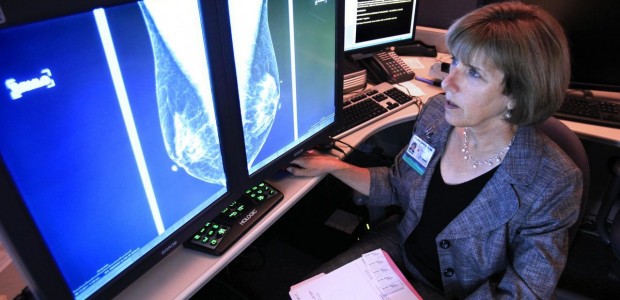In 2009, the U.S. Preventive Services Task Force officially recommended that women from the ages of 50 to 74 should get a mammogram every two years. Over the years though, women with no medical history of breast cancer risk factors have been given some conflicting recommendations from various medical and advocacy organizations. So, when should women begin to get regular screenings for breast cancer?
Well, it seems that women can actually lower their risk of dying from breast cancer by starting to get regular screenings at an even earlier age. In fact, the American Cancer Society, the National Comprehensive Cancer Network, and the American College of Obstetricians and Gynecologists recommend yearly mammograms and an annual clinical breast exam for women starting at age 40. If you have a normal risk for breast cancer, this is certainly something to consider.
Breast Cancer Screening at an Earlier Age
For women who are between the ages of 20 and 40, advocacy groups have recommended clinical breast exams at least once every three years. This can vastly improve your chances of catching breast cancer at an earlier stage where it is the most treatable, but this is not the only option available to them.
Another really good option for women starting around 20 is the breast self-exam. These can be performed every few months or so, but they can help women become more familiar with how their breasts should look and feel normally. This way if any changes should occur, they may be more noticeable. Check out some
The National Cancer Institute, which happens to be one of the National Institutes of Health, has recently begun recommending that women over 40 go in for a mammogram at least once every two years. However, they have not been making any suggestions for clinical breast exams or self-exams. While mammography remains the most reliable breast cancer screening tool available today for the general population, does that mean it is the right choice for everyone? Also, check out some breast cancer imaging and screening facilities to find one in your area.
The Mammography Debate
Not all of the organizations for breast cancer have fully backed a move towards universal mammography screenings. The National Breast Cancer Coalition, which maintains a reputation as a grass-roots advocacy group, thinks that there is not enough evidence to take a stand one way or the other for universal mammography screening in any particular age group of women. They recommend that women, who have shown no signs of breast cancer, should make their own decision based on their family history, other risk factors, and their personal preference.
The meat of this continuing debate over mammograms mostly revolves around the fear of false positives and overtreatment for a condition which would not have threatened a woman’s life after all. The question has been raised on occasion whether all these screenings would do more harm than good among women who are younger than 50 (women in this age range are at the highest risk of receiving a false-positive diagnoses). Mammograms tend to have a tougher time identifying tumors in younger women, because their breast tissue is still denser.
In a 2002 published report on women with the densest breasts, mammography was shown to miss half of the breast cancers which were later identified using ultrasound. Researchers had compiled their analysis after reviewing the results from screening sessions performed on more than 11,000 women.
Guidelines for High Risk Patients
Still, the breast cancer screening guidelines are different for women who are considered to be at high risk for the disease (a high risk patient has a lifetime risk of developing breast cancer that is greater than 20%). Generally the lifetime risk for patients are determined by their family history, or if they possess a BRCA1 or BRCA2 genetic mutation. One of the other high risk factors to consider would be having had radiation therapy performed on the chest between the ages of 10 and 30.
The American Cancer Society suggests that women who are at high risk for breast cancer should consider getting an MRI every year starting at 30 in addition to their annual mammogram. This could be a viable option for women who are considered to have a moderately increased risk for breast cancer (i.e. a lifetime risk of between 15 to 20%), or for women who have abnormally dense breasts. If you are interested, you should discuss the pros and cons of getting an MRI with your doctor.

